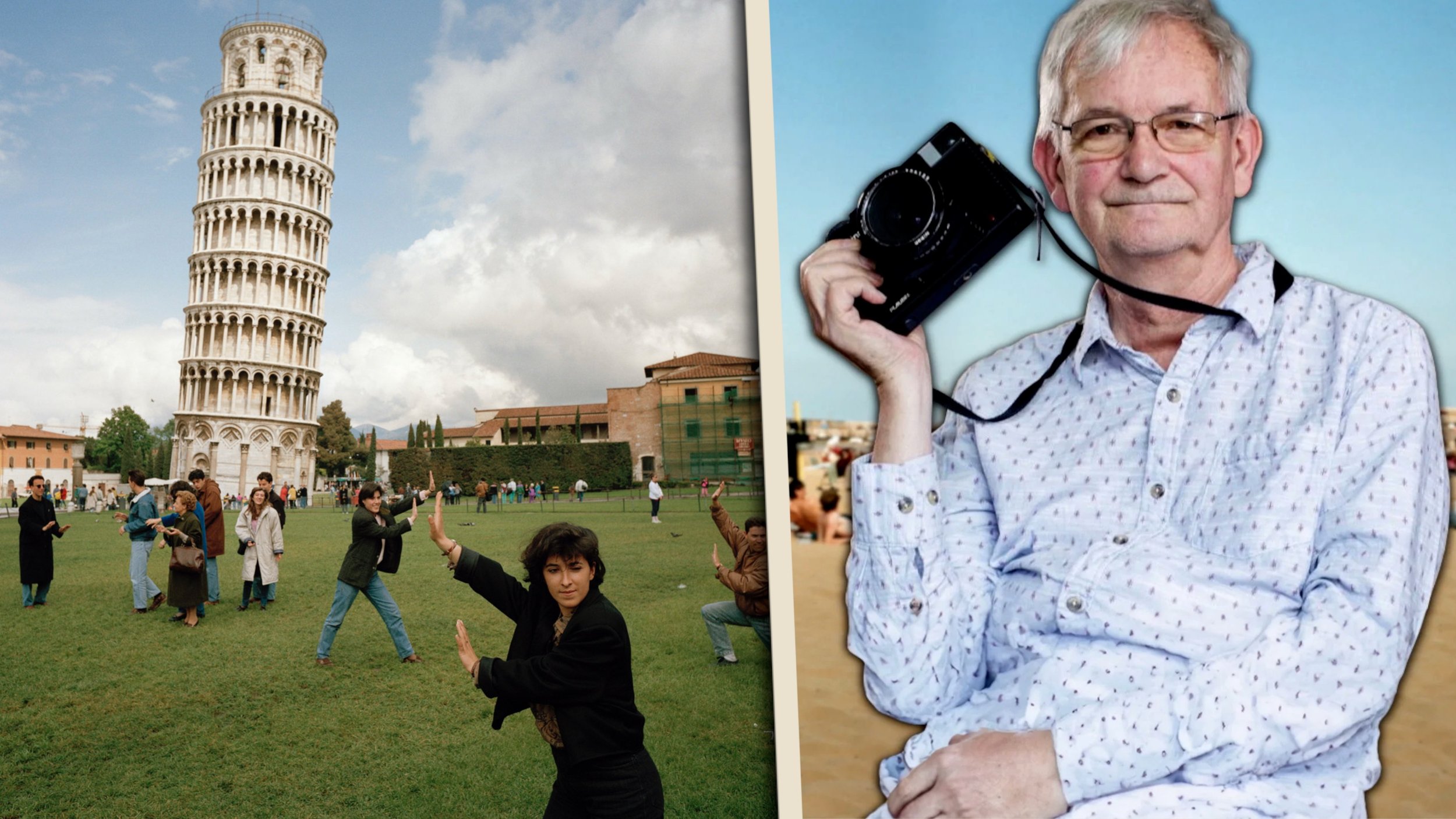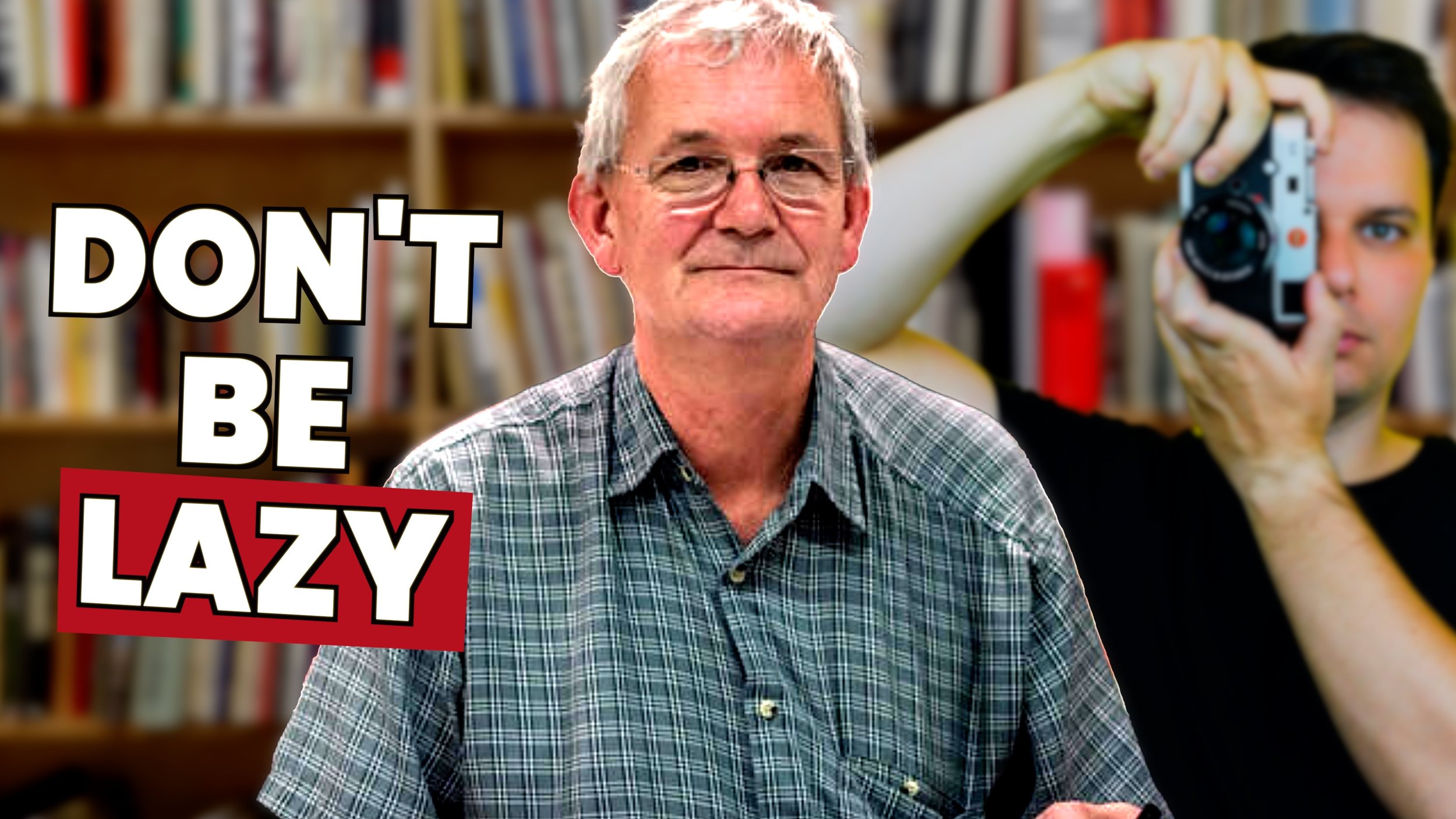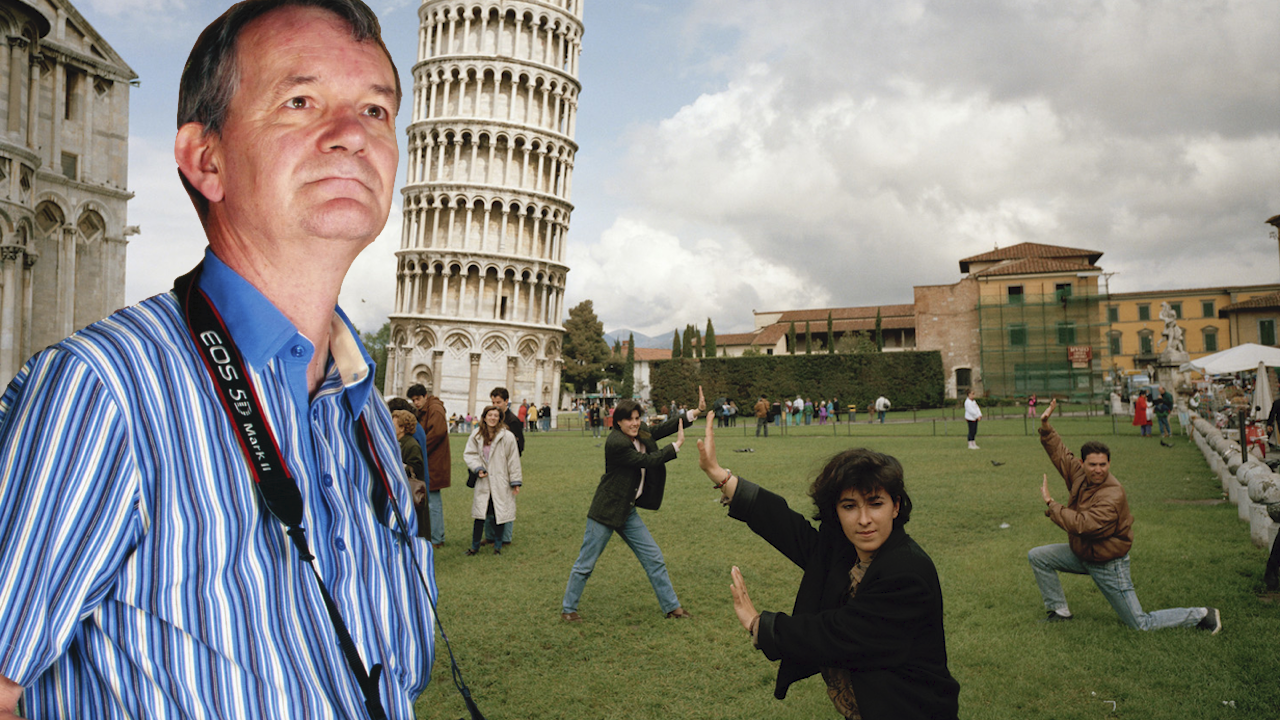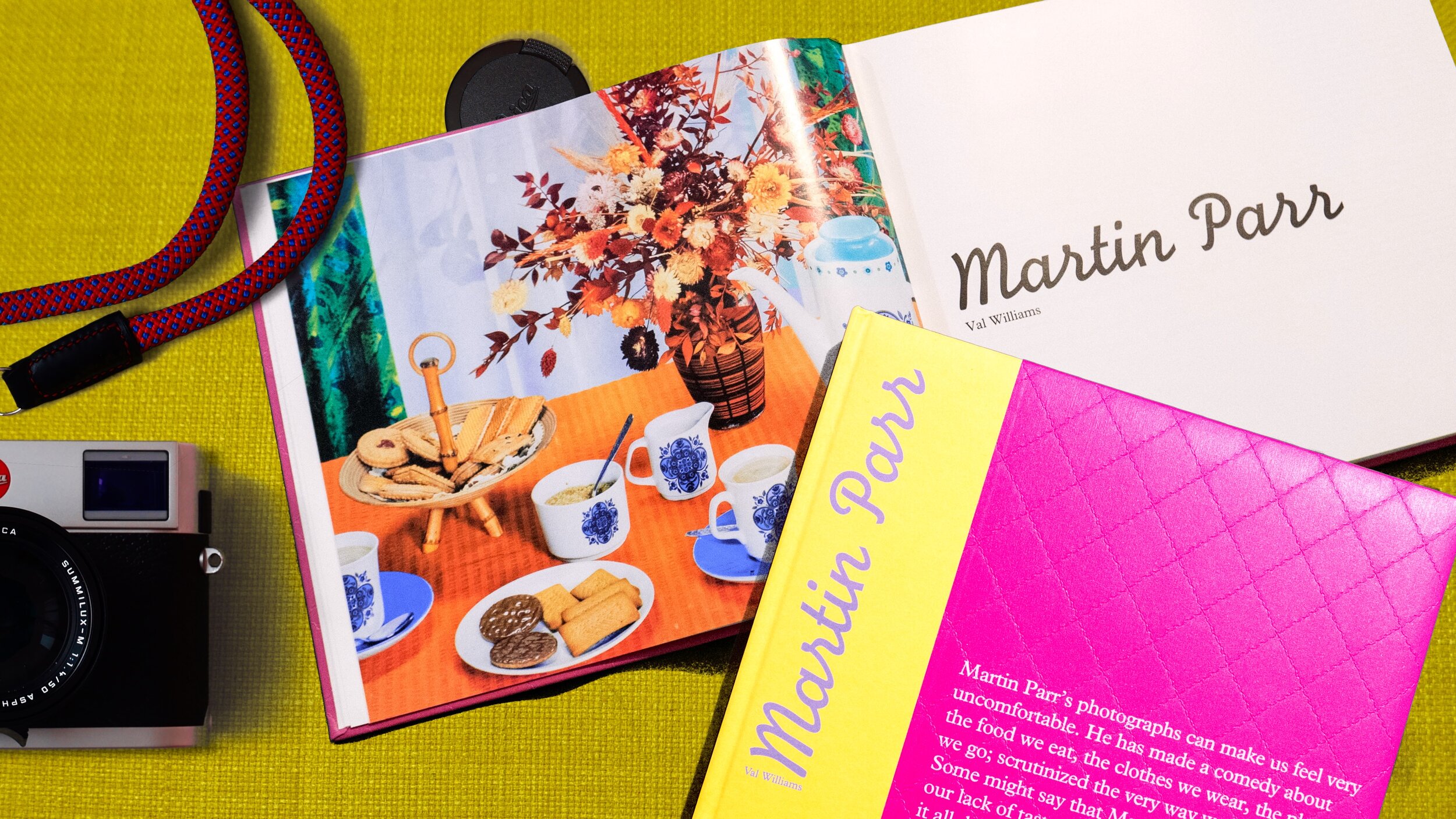Martin Parr
Martin Parr is an internationally renowned British documentary photographer known for his satirical and thought-provoking images that capture the quirks of modern society. Born in 1952 in Epsom, Surrey, Parr has spent over four decades chronicling the lives of people around the world, often focusing on consumerism, tourism, and globalization. His unique approach to documentary photography has made him one of the most influential photographers of his generation.
Early Life and Career
Growing up, Parr was introduced to photography by his grandfather, who was an amateur photographer. He went on to study photography at Manchester Polytechnic (now Manchester Metropolitan University) from 1970 to 1973. After completing his education, Parr began his career as a freelance photographer, working for various publications and exploring his own personal projects.
In the early 1980s, Parr became a member of the prestigious Magnum Photos agency, where he continued to refine his distinctive style. His first significant body of work, "The Last Resort," showcased images of British seaside towns and the working-class families who vacationed there. This series garnered attention for Parr's bold use of color and his unflinching portrayal of everyday life.
Photographic Style and Techniques
Parr's photographic style is characterized by his use of bright, saturated colors and his ability to find humor and irony in seemingly mundane situations. He often uses flash photography to enhance the vividness of his images and to create a sense of artificiality. His work is notable for its focus on the peculiarities of human behavior, as well as its commentary on consumer culture, social class, and globalization.
Career Highlights Throughout his career, Martin Parr has published numerous photo books and exhibited his work in galleries and museums worldwide. Some of his most acclaimed projects include:
"The Last Resort" (1986): This series captured the essence of British seaside towns during the 1980s, exploring themes of leisure, consumerism, and social class.
"Small World" (1995): A project documenting the impact of tourism on cultures around the world, highlighting the homogenization of global experiences.
"Common Sense" (1999): An exploration of consumer culture, featuring close-up images of everyday objects and scenes that reveal the absurdity and excess of modern life.
"Think of England" (2000): A collection of images that provide a satirical look at English society and culture, from afternoon tea to football matches.
"The Rhubarb Triangle" (2016): A series documenting the unique rhubarb-growing region in West Yorkshire, England, and the people who work within it.
Photography Gear
Throughout his career, Martin Parr has used a variety of cameras and equipment, including:
Medium format cameras such as the Mamiya 7 and the Plaubel Makina 67
35mm cameras like the Leica M series and the Contax G2
Flash equipment, particularly the ring flash, to create his signature artificial lighting
Published Photo Books
"The Last Resort" by Martin Parr: This influential book features Parr's early photographs of the seaside town of New Brighton, England. The vivid and saturated images depict the leisure time of working-class families, showcasing Parr's signature style and offering a unique perspective on British culture during the 1980s.
"Martin Parr" by Martin Parr and Val Williams: This comprehensive monograph covers Parr's extensive career, exploring his distinctive approach to photography and his fascination with the everyday. The book includes an in-depth interview with the photographer, as well as critical essays that contextualize his work within the broader history of photography.
"Martin Parr: The Non-Conformists": In this book, Parr documents the close-knit communities and traditional industries of West Yorkshire, England, during the 1970s. The black-and-white images showcase Parr's early work, offering a glimpse into the lives of people striving to maintain their identity and traditions in the face of change.
"Small World": This humorous and satirical collection captures the quirks of mass tourism and globalization. Parr's photographs, taken across various countries, reveal the absurdity and sameness of tourist experiences, prompting readers to reconsider their own travel habits.
"Déjà View: Martin Parr x The Anonymous Project": In this collaboration with The Anonymous Project, Parr curates a selection of found amateur color slides, creating a nostalgic and captivating visual journey through the mid-20th century.
"Martin Parr: From the Pope to a Flat White, Ireland 1979-2019": This book spans Parr's 40-year relationship with Ireland, showcasing his vivid and witty observations of the country's culture, people, and landscape. The images provide a unique and affectionate perspective on a nation in transition.
"Martin Parr: Beach Therapy": In this collection, Parr explores the universal appeal of the beach as a place of leisure and relaxation. The book features images from beaches around the world, capturing the idiosyncrasies of beachgoers and highlighting Parr's ability to find humor and beauty in the everyday.
Quotes
"Photography is the simplest thing in the world, but it is incredibly complicated to make it really work."
"I go straight in very close to people, and I do that because it's the only way you can get the picture. You go right up to them."
"The world is full of surprises, and I want to record those surprises. That's why I'm always looking for things that are humorous or strange."
"With photography, I like to create fiction out of reality. I try and do this by taking society's natural prejudice and giving it a twist."
"I'm not an artist who happens to use photography. I'm a photographer who uses the camera as my medium."
Legacy and Influence Martin Parr's distinctive style and approach to documentary photography have left a lasting impact on the field. His unapologetic use of color, flash photography, and satirical observations have inspired a new generation of photographers to explore similar themes and techniques. Parr's work has contributed to a greater understanding of the complexities of modern society and has encouraged photographers to find beauty and meaning in the everyday.
One of Parr’s early inspirations were:
Tony Ray-Jones was a British photographer known for his influential work in the field of social documentary photography. Born in Somerset in 1941, Ray-Jones studied graphic design in London before beginning his career as a photographer. He is best known for his photographs of English customs and traditions, capturing the eccentricities of everyday life in Britain during the 1960s and 1970s.
Chris Killip is a British photographer and professor of visual and environmental studies at Harvard University. Born in the Isle of Man in 1946, Killip is best known for his black and white photographs of working-class communities in the northeast of England during the 1970s and 1980s. His images depict the struggles of these communities against deindustrialization and unemployment, and they have become important documents of social history.
Other notable photographers with similar style are:
Alex Webb: Renowned for his vibrant color photography and use of complex compositions that capture the energy of street life.
Bruce Gilden: Known for his confrontational, up-close street photography that highlights the raw, unfiltered moments of urban life.
William Eggleston: A pioneer in the field of color photography who captures the beauty and strangeness of everyday scenes in the American South.
Tom Wood: An Irish-born photographer who documents the everyday lives of people in Liverpool, England, with a keen eye for color and detail.
Viviane Sassen: A Dutch artist and fashion photographer whose work often features bold colors and surreal compositions, drawing inspiration from her upbringing in Kenya.
By examining Martin Parr's career and the photographers with similar styles, it's clear that his influence on contemporary photography is undeniable. His unique approach to documenting the world around him has opened new avenues for photographers to explore, making him an essential figure in the history of photography.









![Martin Parr's advice for better photos[video]](https://images.squarespace-cdn.com/content/v1/5b670534b98a78d5e84a7d19/1709316822341-S7A2G20XX4CL7RHLYW0S/Advice+for+better+photos+Parr+no+text.jpg)








Every bad picture is a step toward a good one. Martin Parr knows this better than most photographers. Interviews